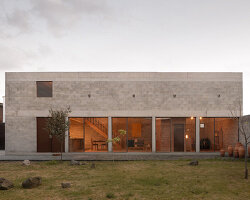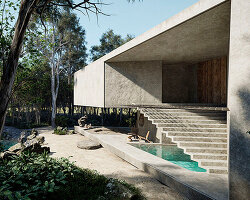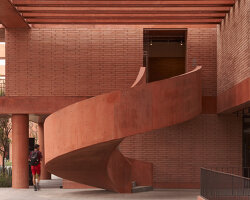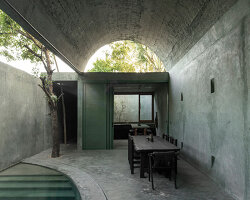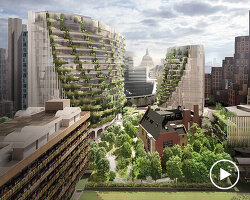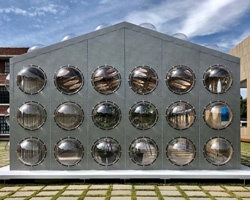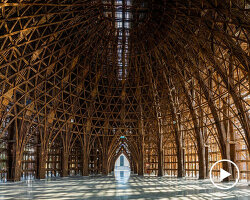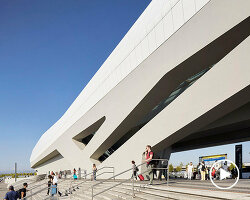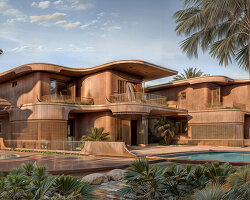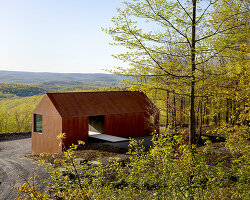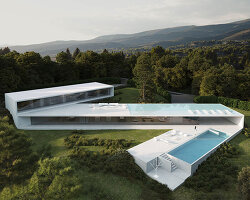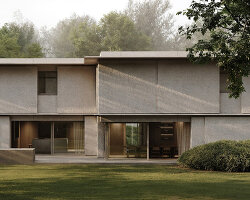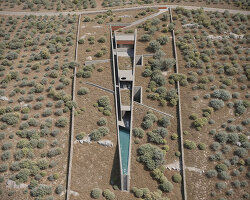concealed 12 meters beneath an existing house in the west of mexico city, amezcua has transformed a former sand mine into a recreational space, titled the ‘photocatalytic cave’. what was previously a dark and humid hollow has been adapted by the architects to create a warm and inviting place to relax or host parties.
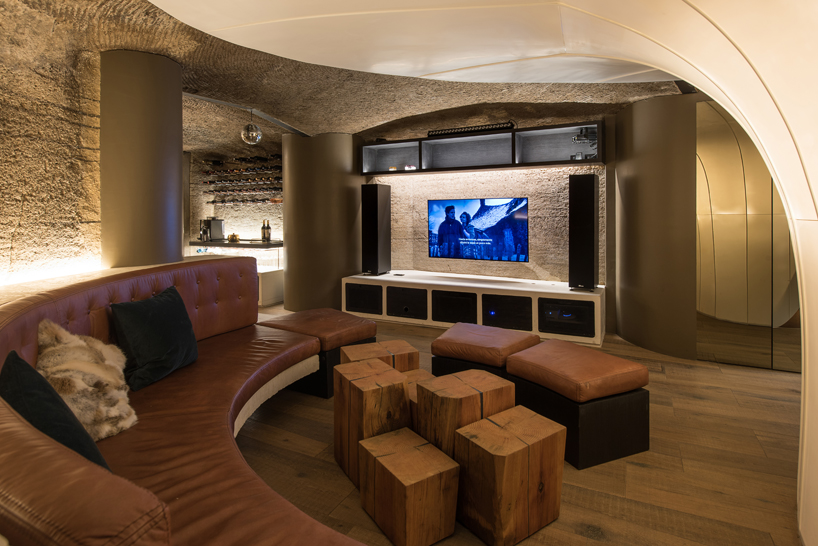
several pieces of variously-sized solid wood – supported on wheels – serve as coffee tables or mobile benches in the living room and TV area
all images © jaime navarro
encompassing a total floor area of 753 ft2 (70 m2), the brief from the client required a snug place to enjoy spending time with friends or alone. to achieve this transformation of a naturally challenging space, the architects began the project by making the cave structurally sound, carving the roofs to redirect water runoffs and using a thermoformable and photocatalytic material to purify the air.
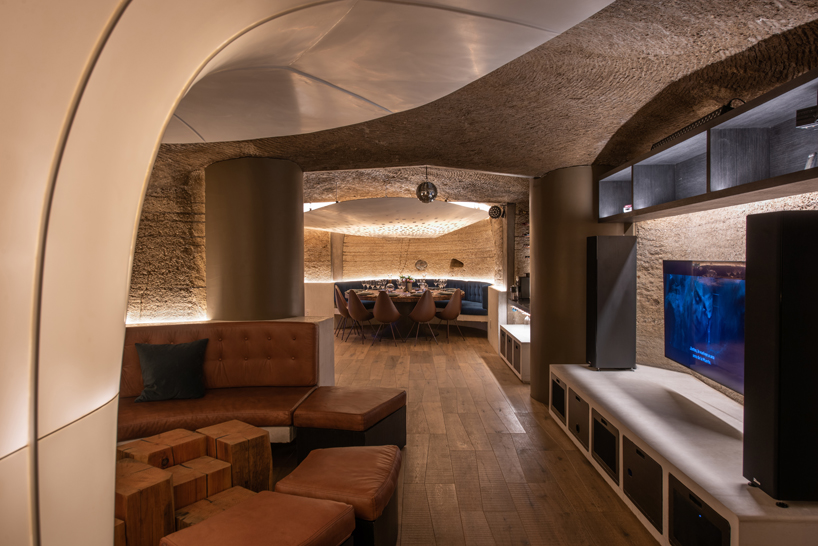
the project is located in an area of mexico city where it’s common to find caves that were created decades ago to extract sand as a building material
the first action was to secure the structure of cave by placing metal lintels as in coal mines, supported on columns. the second was to carve the roofs, creating domes, which gain height and physically distribute load forces to the perimeter walls, in addition to directing natural water runoffs to places where they could be properly contained or guided.
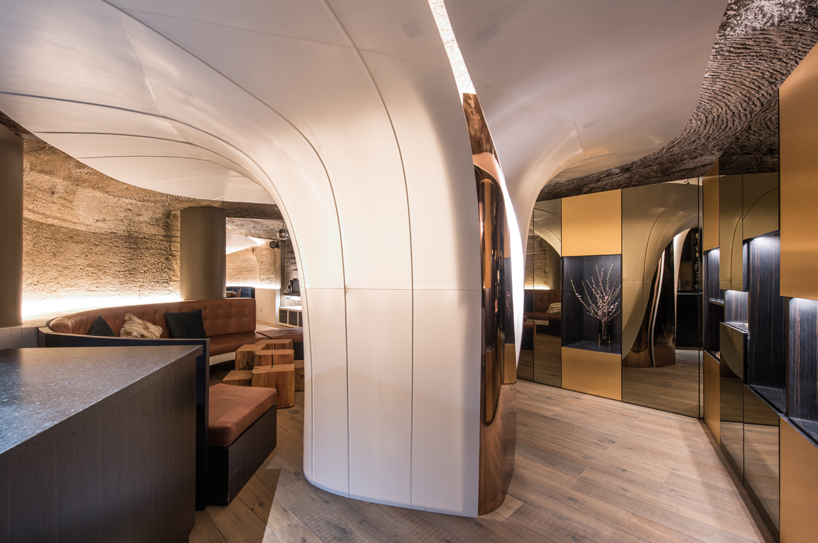
a retro illuminated cover that interferes with the ceiling, catalyzes when in contact with natural or artificial light, and acts as an air purifier and light diffuser
finally, the humidity of the site was substantially reduced, which, in combination with the predominant natural element – limestone – produces bacteria and fungi. for this last action, passive techniques were used, such as natural air circulation and anticorrosive materials, in addition to active equipment such as air injectors, dehumidifiers, and heaters to dry off the environment. in addition to this, the inclusion of the material krion® stands out, which is characterized by being thermoformable with photocatalytic properties. this was used in two illuminated covers that catalyze when in contact with natural or artificial light and, as a result, act as air purifiers and light diffusers.
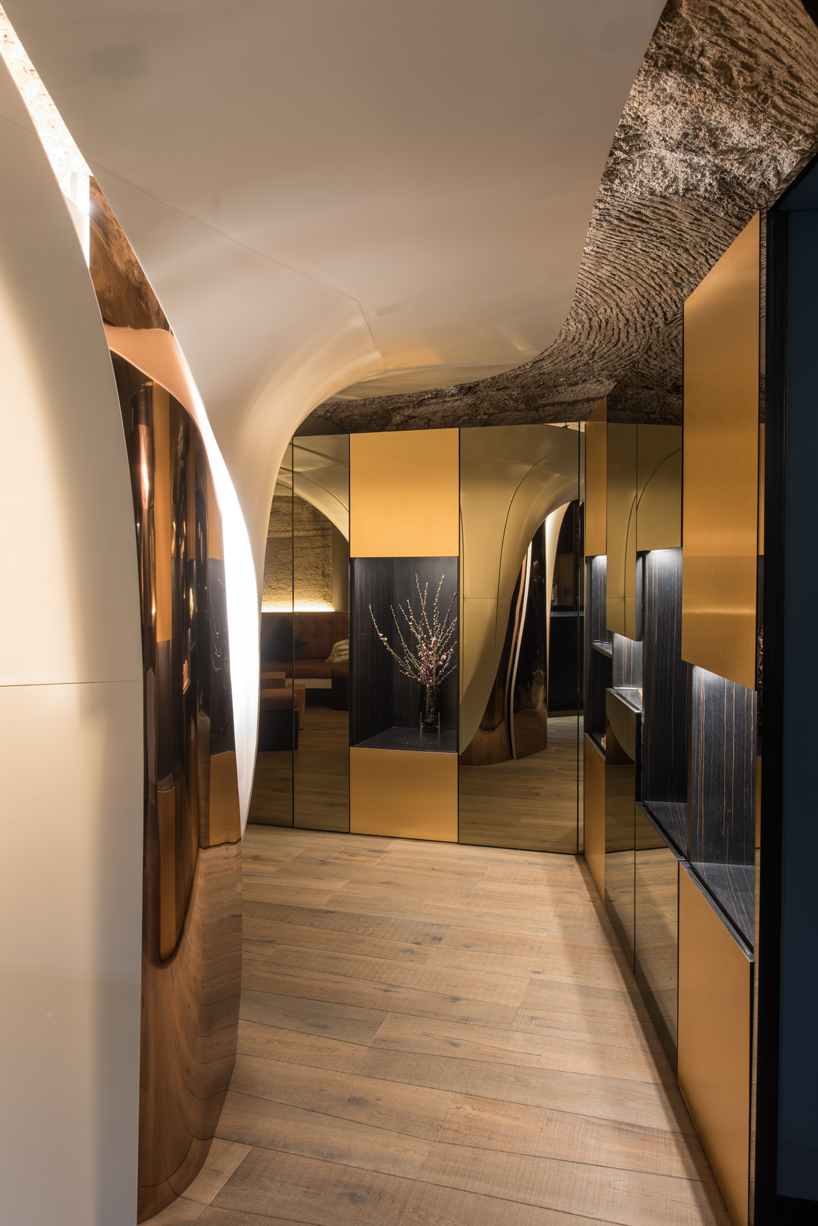
the entrance hall has a storage/display cabinet closet, made of black wood with copper plates and inked mirrors. this piece of furniture conceals a door that leads to the toilets.
the program consists of five galleries, one of which is isolated. the first one is the entrance, which includes the kitchen, bar, and part of the closet; the second, contains more closet and exhibition space, in addition to the living room and TV area. a third gallery incorporates the cellar and smoking area. the fourth integrates the dining room and access to a balcony and, finally, a separate gallery from the rest encloses the toilets and its anteroom.
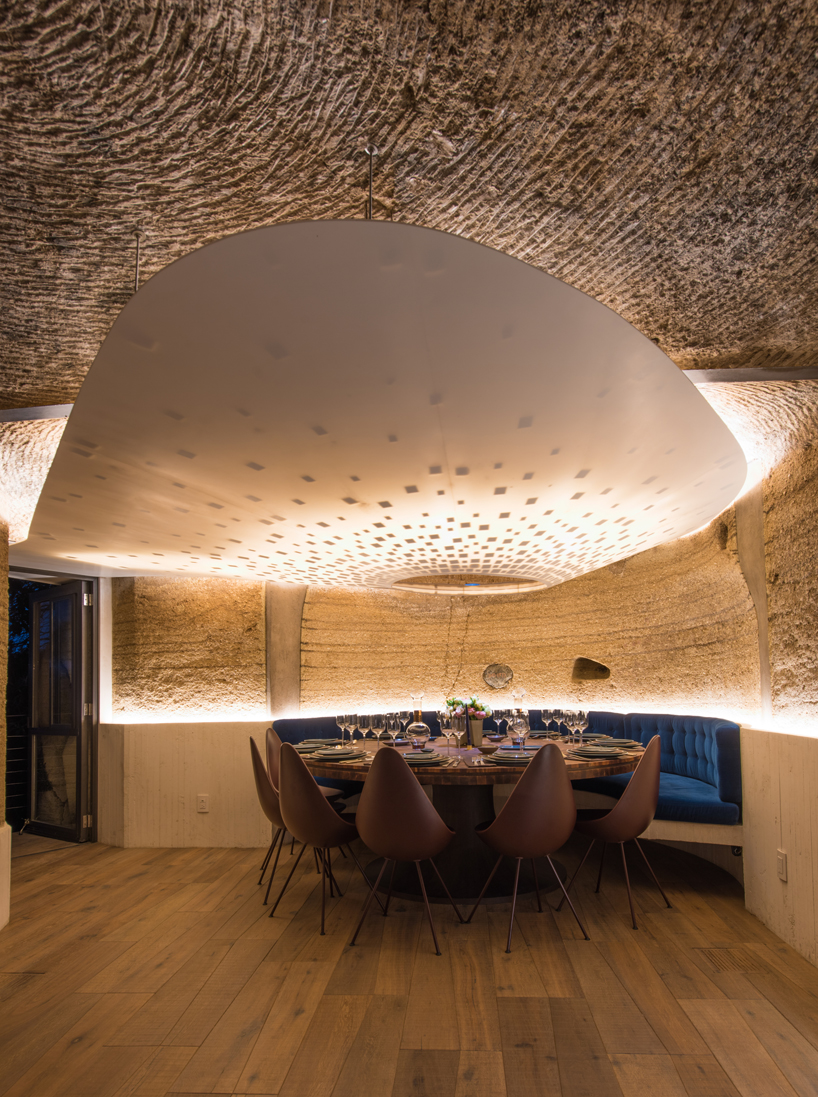
the dining room gives access to a balcony that provides natural air circulation
upon entering, the first thing you see is one of the illuminated pieces that resembles a calla lily flower in its shape, bringing soft light into the cave. this piece completes the entrance hall and is staggered between the kitchen and living room galleries. in addition to creating beautiful reflections with the closet mirrors, this element also visually conceals the entrance to the toilets.
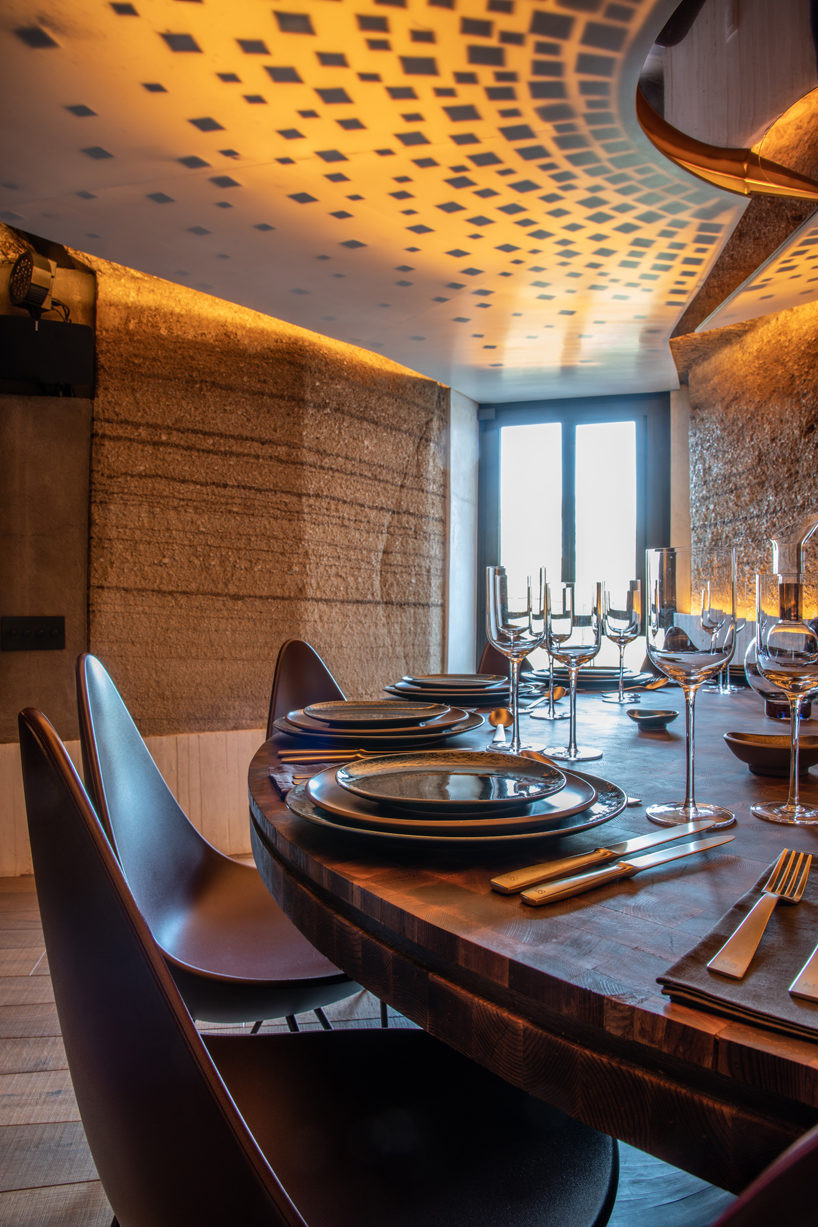
a backlit piece, which is attached to the ceiling, illuminates the dining room table and exhibits a series of blocks placed by the owner, each carrying a written intention
the kitchen and bar are equipped to host parties and serve formal dinners of up to 12 people. this service space has a storage/display cabinet closet, made of black wood with copper plates and inked mirrors. this piece of furniture conceals a door that leads to the toilets, where the focal piece is a washbasin manufactured on-site with marbled concrete, cast with a special formwork by the artist rodolfo díaz cervantes of taller tornel, whose work refers to the texture of the strata of the cave.
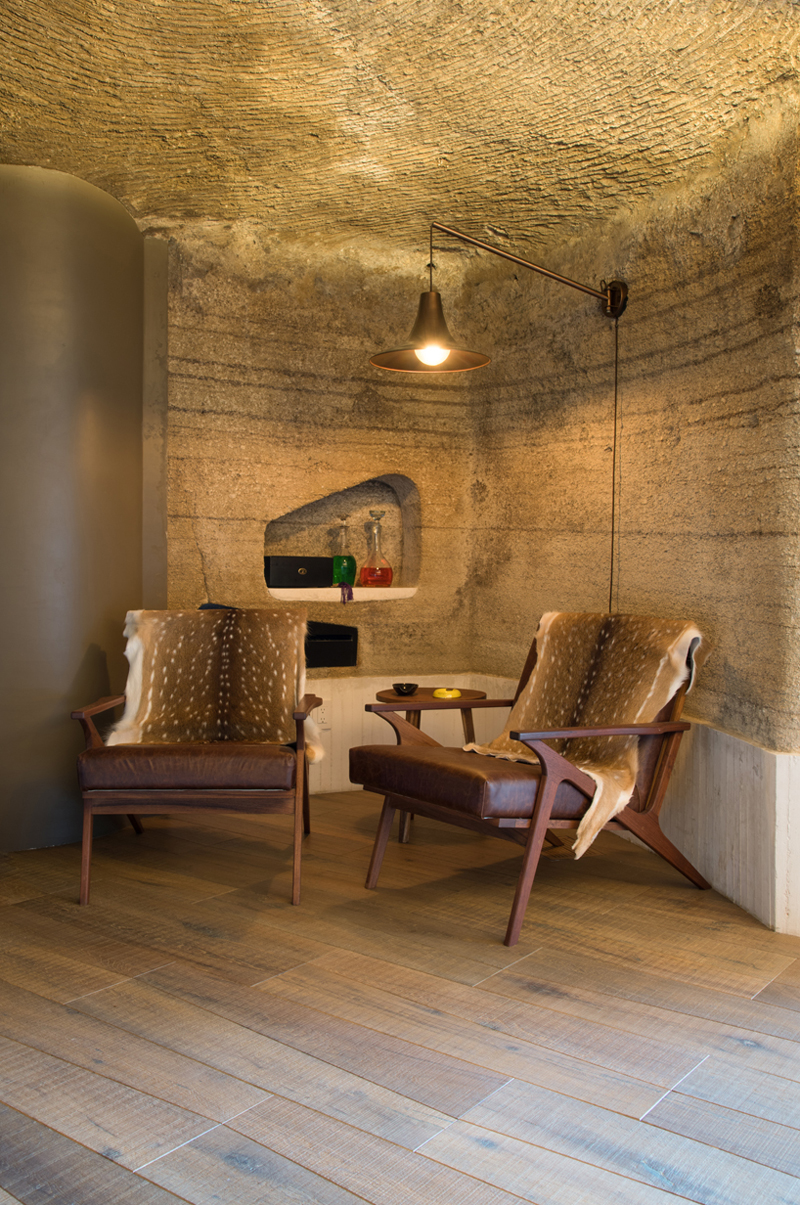
the gallery that precedes the dining room has, on one side, an intimate place to smoke cigars or have a drink and, on the other, a wine cellar and coffee area
the central gallery of the cave houses the living room and TV area, whose curved armchair was cast following the shape of the wall and is supported by additional movable armchairs. instead of opting for a coffee table, several pieces of variously-sized solid wood were fragmented, serving as support tables or mobile benches.
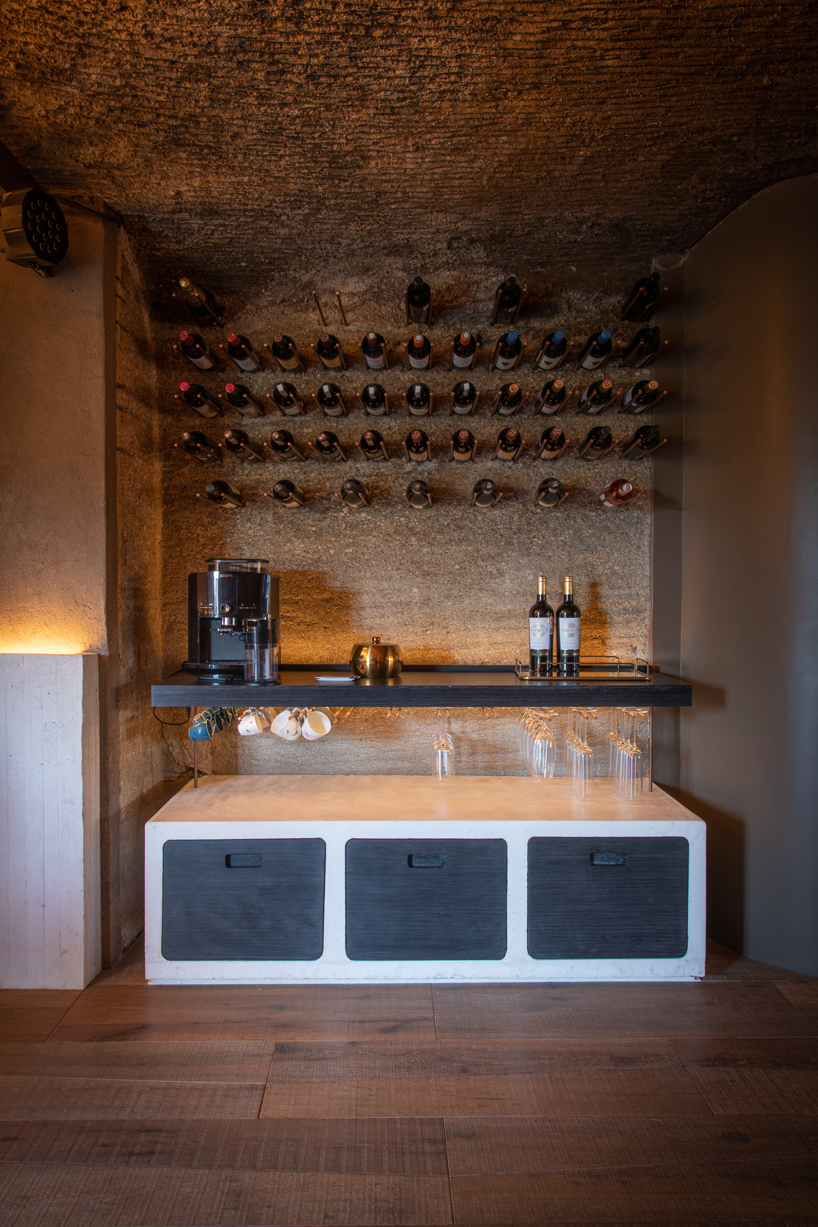
the cave is found 12 meters below a house, projected half a century ago
the gallery that precedes the dining room has, on one side, an intimate place to smoke cigars or have a drink and, on the other, a wine cellar and coffee area. finally, the last gallery displays the second backlit piece, which is attached to the ceiling. in addition to illuminating the dining room table, this piece emulates the effect of an x-ray, exhibiting a series of blocks placed by the owner – each carrying a written intention – following the recommendation of the artist emilio garcía plascencia.
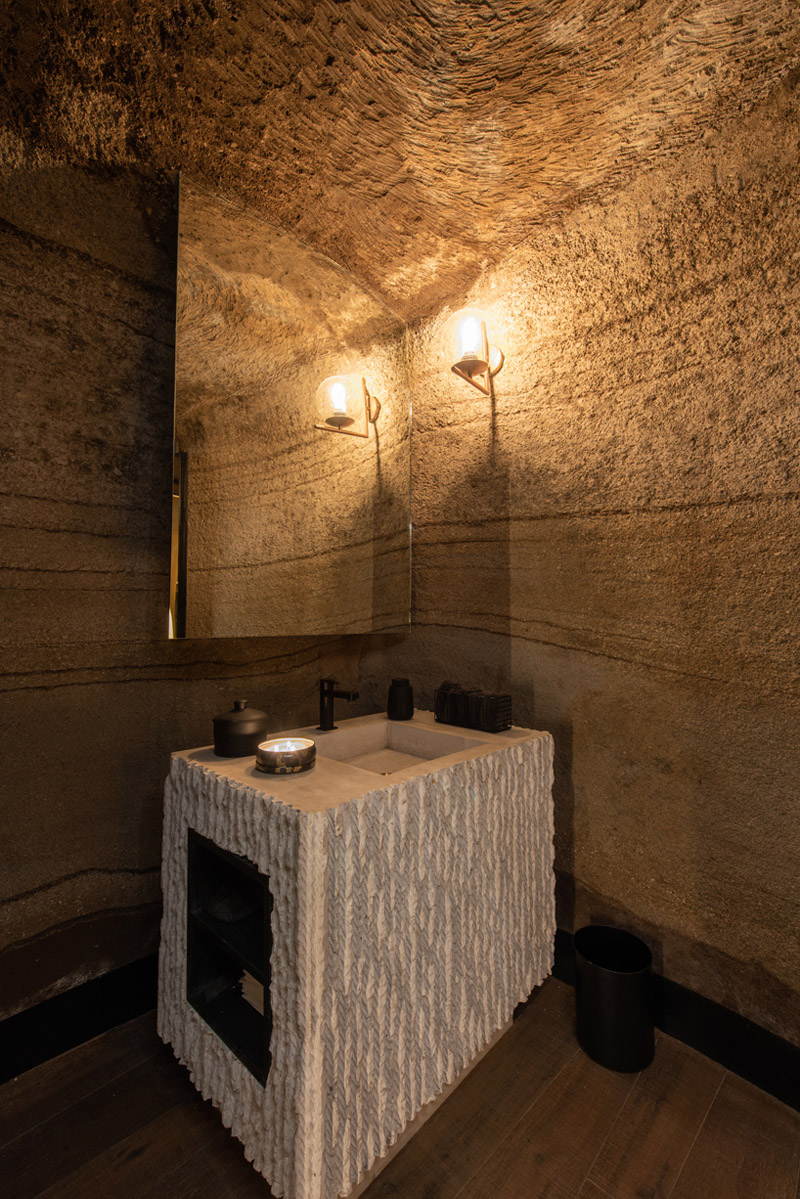
the washbasin was manufactured on-site with marbled concrete, cast with a special formwork whose texture refers to the strata of the cave
this place has a clear and respectful dialogue with the design of the house that architect rocha and sculptor paulsen made. its beauty is in its nature and the reading of time observed in the strata of its walls; in an intervention that softens the space and transforms it into a cave that shows the advances in design, uses and technology that have occurred throughout the thousands of years that human beings have occupied them. it is a space that awakens the intuition and the most primitive homes of men.
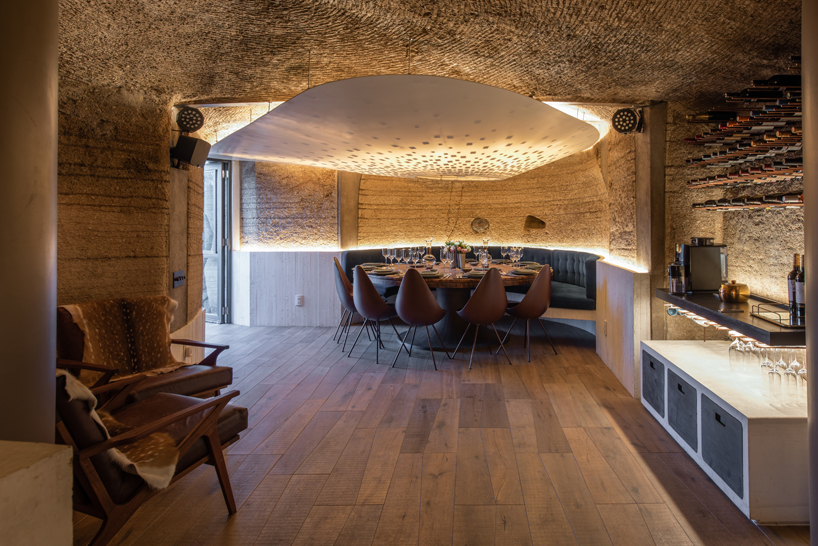
the roofs were carved to physically distribute load forces to the perimeter walls, in addition to directing natural water runoffs to places where they could be properly contained or guided
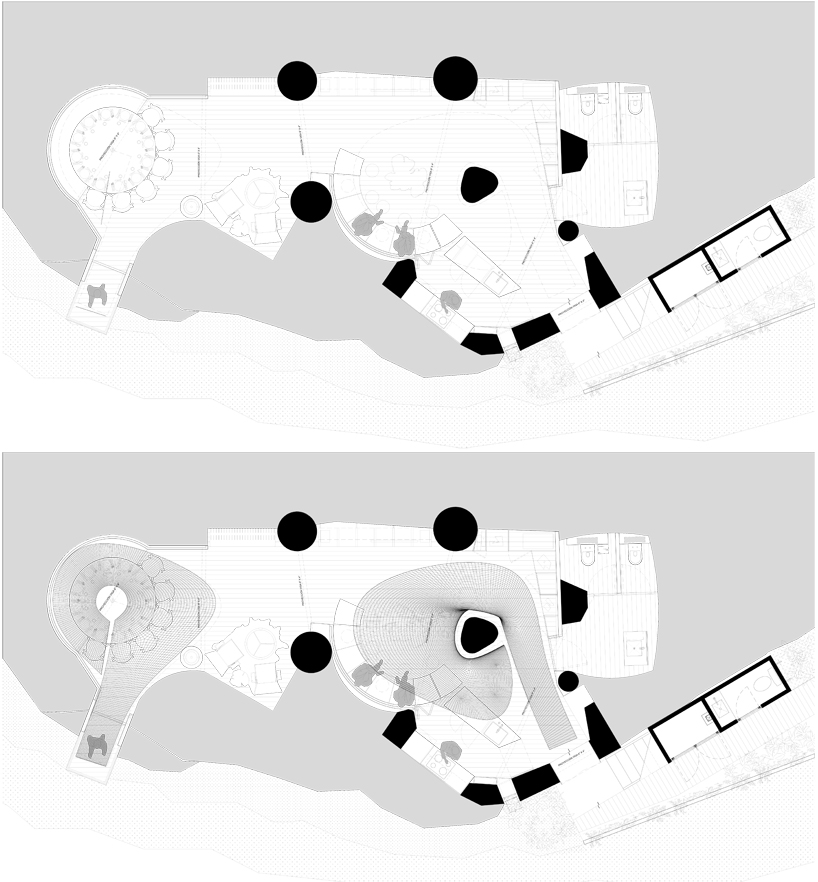
floor plans
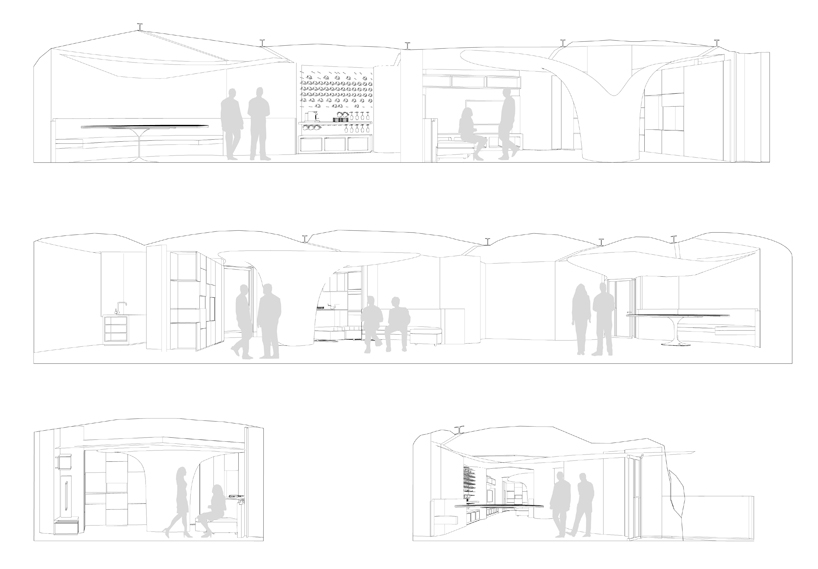
sections
project info:
project name: photocatalytic cave – MM
design: amezcua
design team: gabriela mosqueda, aarón rivera, rodrigo lugo, miguel gonzález, saraí cházaro, víctor cruz, maría garcía, mauricio miranda, julio amezcua
development: MM desarrollos
solid surface interior lining: krion k-life® by porcelanosa®
thermoformed krion-life® and installation coordination: embodied
interior lighting project: luz en arquitectura
outdoor lighting project: light moxion
pedestal and concrete bathroom sink: taller TORNEL
concrete furniture: JM construcciones
listone giordano floor (supply and installation) and mafi table: forte/soldesi
entertainment system: stylus audio & video
photography: jaime navarro
designboom has received this project from our ‘DIY submissions‘ feature, where we welcome our readers to submit their own work for publication. see more project submissions from our readers here.
edited by: lynne myers | designboom


